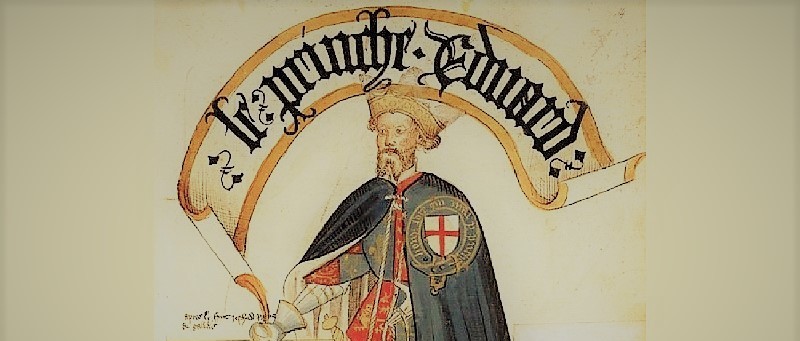Edward, the Black Prince
Posted on 6th January 2021
Edward of Woodstock born on 15 June 1330 at Woodstock in Oxfordshire, England, the eldest son of King Edward III of England and Philippa of Hainault.
Many titles were bestowed on Edward including Earl of Chester and Duke of Cornwall in 1337, and Prince of Wales in 1343.
Edward showed great military awareness and ability from a young age, fighting in military campaigns with his father. At the age of only sixteen, he was heavily involved at the battle of Crecy on 26 August 1346 during his father’s campaign for the throne of France.
On 10 October 1351, Edward married his cousin Joan of Kent at Windsor Castle, England, then being named Prince of Aquitaine and Gascony by her father.
Edward was sent to France with his own command in 1355, where he employed a series of scorched earth raids to ravage the French countryside and impede the advance of the French forces. This policy weakened the French economy for many years and the strategy culminated in the Battle of Poitiers; a resounding victory for Edward even though his forces were heavily outnumbered. King John II of France was captured at the battle and later ransomed.
Edward was to take up residence in France with his wife, to control his territories.
In 1367 Edward was offered the lordship of Biscay if he assisted Peter of Castile to regain his Spanish throne from his brother Henry of Trastamara. This he did in a classic victory at the Battle of Najera on 3 April that year; the ungrateful Peter of Castile, now restored to his throne, did not however give up Biscay.
Edward returned to Aquitaine, but he was unpopular with his people who rose up against him, due amongst other things to the taxes he was imposing on them.
In 1371 Edward returned to England as he was suffering from an illness, possibly contracted while fighting in Spain. His health continued to deteriorate; he knew he was dying. Little is known of how he spent his final years.
He died on 8 June 1376 at Westminster and is buried at Canterbury Cathedral.
Edward had a distinguished military career, but was never to become King of England as he died before his father. His son Richard II was eventually to succeed his grandfather.
Edward of Woodstock is better known today as the Black Prince, a name given to him many years after his death; maybe due to the imposing figure he portrayed on the battlefield dressed all in black.
Tagged as: Junior Middle Ages
Share this post:





